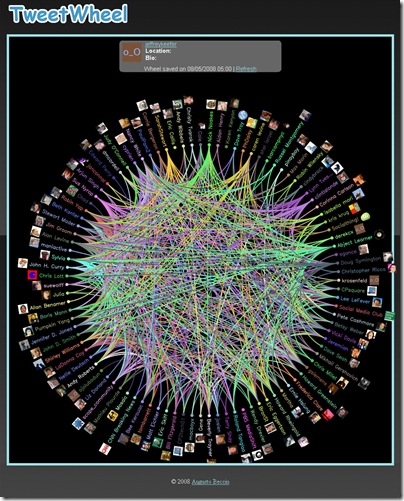At the end of each week in our Connected Futures workshop, we are invited to write a post or otherwise communicate some reflection as to how the exercise went. I have been leaving most of my comments within the workshop area (a customized WebCrossing space), so I decided to have this week’s posting on my own blog. I do not have any evidence that anybody in the workshop is reading or otherwise reviewing my blog, nor am I convinced that there is an ongoing web search on using our tag of CP2tech01. That is ok, as the purpose of this post (for me) is to organize and express my thoughts.
I thought this week’s section on using various technologies was probably one of the most overwhelming ones of the workshop. It was almost as if there were a lot of people interested in a lot of tools, but somehow it was not held together as well as it could be. Some looked at Skype, others at Netvibes (myself included), del.icio.us, and Facebook. The objective seemed to be to learn from one another’s best practices, and I was so busy trying to learn new things that I am not sure what to do with them all. I felt people started off in different areas with tools they like, though there really was not enough time in a week to learn anything brand new if there were no previous use of them. I was lost as to how to sign up for working with others on these tools, and while I had a useful Netvibes session, I think the perceived goals of this week were impossible in only one week.
Were we supposed to become our own community? Consider them for our communities? Help one another? I think perhaps a combination of all of them, and every time I thought I got it and went back to the internal wiki, I saw additional documents and instructions. I started to feel that the thinking of how this was all held together was developing in process, and while that can be very good, there was so much to try to learn in such a short point, that I am not sure where we are right now.
While this feeling of confusion has happened before during the workshop (learning can be a messy business!), I am still confident that the workshop leaders have all this together. Of course, with different leaders coming and going with greater or lesser involvement, I am not too sure about this right now. Let’s see what week four brings . . .


